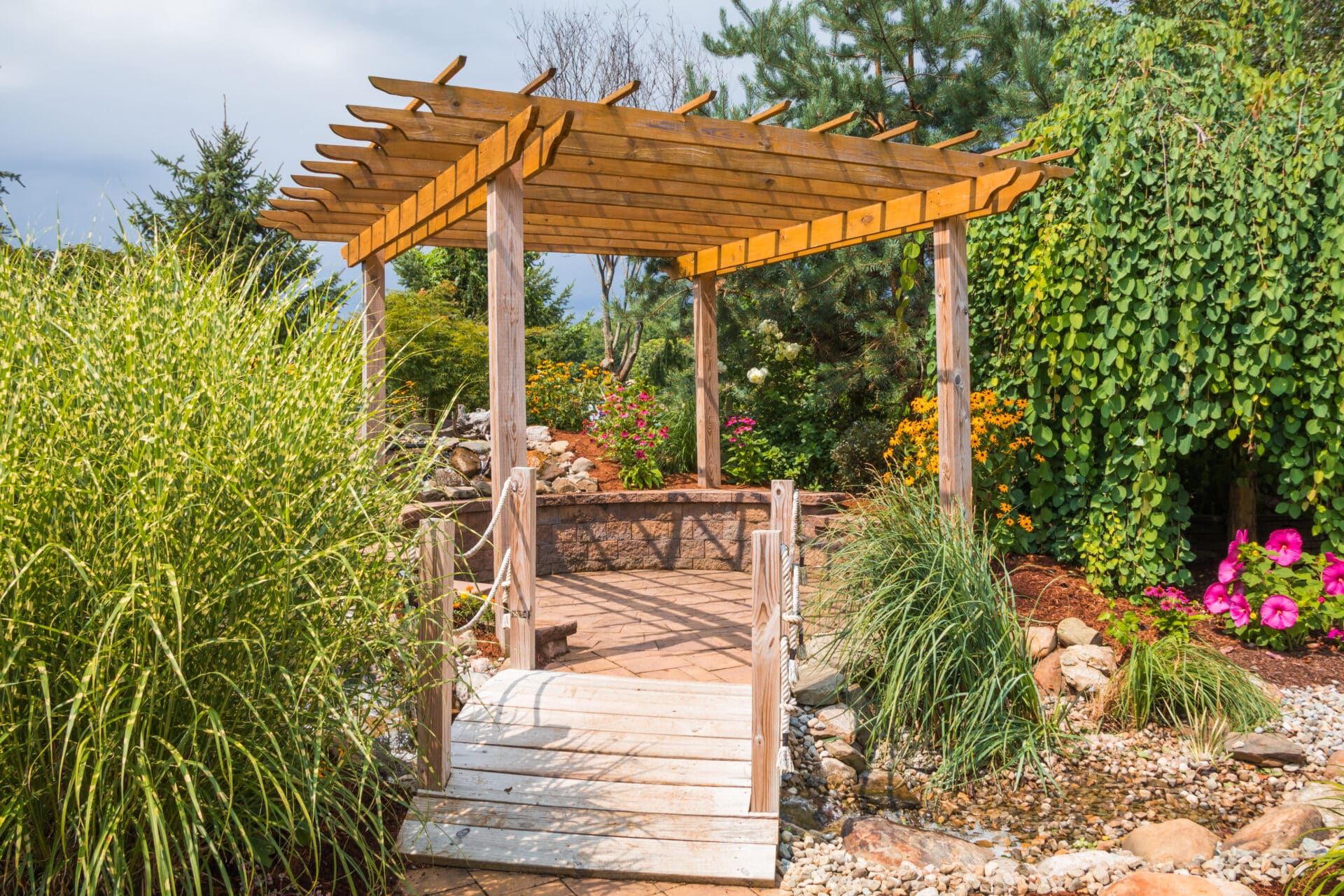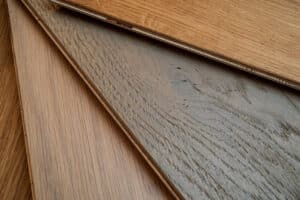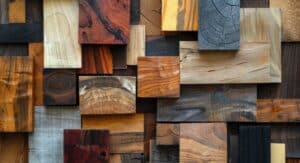If the idea of incorporating a pergola into your outdoor area has crossed your mind, you’re certainly on the right track toward enhancing both the beauty and functionality of your home. However, as you embark on the journey of pergola construction, a fundamental question emerges: Which wood variety reigns supreme for a pergola?
Rest assured that we, your trusted team of specialists in construction materials, outdoor projects, marine construction, and logistics, are right here in sunny Florida to provide expert guidance in your quest for the perfect pergola wood.
Together, we’ll delve into the top wood options and key considerations, ensuring your pergola not only graces your outdoor space with enduring strength but is also a timeless beauty for years to come.
Wood Comparison Guide for Pergolas
When it comes to picking the right wood for your pergola, you’ll find many options, each with its unique qualities. For example, in the world of high-end lumber for outdoor projects, ipe vs. teak is a common debate among homeowners and builders alike.
Now, let’s look at some of the best wood options for your outdoor structure.
Pressure-Treated Pine: Affordability and Durability
Many homeowners opt for pressure-treated pine when looking for a cost-effective and durable solution. This process involves saturating the wood with preservatives, which shields it from insect attacks and rot. It’s a smart choice if you’re watching your budget, but remember, giving the wood regular attention is crucial to extending its lifespan.
Western Red Cedar: Natural Beauty and Rot-Resistance
If you’re drawn to the natural beauty of wood, western red cedar is a fantastic option. Its reddish-brown color adds warmth and character to your outdoor space. Cedar is naturally rot-resistant due to its high levels of natural oils. It’s a favorite among homeowners seeking a wood that requires minimal upkeep while providing long-lasting charm.
Redwood: Elegance and Longevity
Redwood is renowned for its stunning appearance and durability. It’s a top choice for pergola construction due to its rich, reddish-brown color and natural resistance to rot and insects. While redwood may cost more than other options, its aesthetic appeal and long lifespan make it a high-quality investment.
Ipe: Tropical Hardwood Excellence
For those desiring the pinnacle of durability and weather resistance, ipe, a tropical hardwood, is an excellent choice. Ipe wood is incredibly dense and boasts exceptional weather resistance, making it ideal for outdoor structures exposed to various weather conditions. While it’s on the higher end in terms of cost, its longevity and minimal maintenance requirements make it a worthwhile investment.
Douglas Fir: Strength and Versatility
Many prize Douglas fir for its strength and versatility. It’s an affordable option that offers durability and a straight grain pattern, making it suitable for pergola construction. While it may not have the same natural resistance to decay as cedar or redwood, proper sealing and maintenance can help extend its lifespan.
The Importance of Using a Durable Material for Wood Pergolas
When choosing the best wood for your pergola, prioritizing durability is essential. Pergolas are outdoor structures exposed to the elements year-round, making weather resistance a key factor. Durable wood options like cedar, redwood, ipe, and composite decking can withstand rain, sun, and temperature fluctuations without succumbing to decay.
Additionally, the durability of the wood you select impacts the overall lifespan of your pergola. A high-quality wood choice can significantly extend the time your pergola remains in excellent condition, requiring minimal upkeep.
Best Wood for Pergola Designs by Location
The climate and environmental conditions of your location play a vital role in determining the best wood for your pergola. Here are some considerations based on different regions.
Humid Climates
In humid regions like Florida, where our expertise lies, selecting a wood with natural resistance to moisture and insects is crucial. Cedar and redwood are popular choices due to their ability to thrive in humid conditions.
Dry Climates
In arid climates, such as those in the southwestern United States, ipe and pressure-treated pine are excellent options. These woods can withstand the intense sun and dry conditions while maintaining their integrity.
Coastal Areas
Coastal locations, with their salty air and high moisture levels, demand wood with exceptional weather resistance. Cedar and redwood are again suitable choices due to their natural resistance to decay in moist environments.
How to Protect Your Wood Choice
To ensure your chosen wood for the pergola remains in top condition, it’s essential to protect it from the elements. Here are some strategies for preserving your pergola’s wood.
Staining
Applying a wood stain can enhance the wood’s appearance while providing an extra layer of protection against UV rays and moisture. Regularly re-staining your pergola will help maintain its color and durability.
Sealing
Sealing your pergola’s wood can create a barrier against moisture and insects. It’s especially crucial for woods that may not have a natural resistance to decay. Regular sealing extends the lifespan of your pergola.
Painting
Painting your pergola offers both protection and customization. Choose a high-quality outdoor paint that can withstand the elements and enjoy a personalized look that complements your outdoor space.
How to Maintain Your Pergola
Once you construct and protect your wooden pergola, regular maintenance becomes essential to keep it beautiful and functional. Here are some tips for maintaining your pergola in top shape:
- Regular Cleaning: Remove dirt and debris from your pergola’s surface to prevent mold and mildew growth.
- Inspect for Damage: Periodically check for any signs of damage, such as cracks or rot, and address them promptly.
- Refresh Protective Coatings: Reapply stains, sealants, or paints as needed to maintain protection.
- Trim Nearby Vegetation: Keep nearby plants and vines trimmed to prevent them from encroaching on the pergola.
Find the Best Type of Wood for a Pergola
The best type of wood for your outdoor pergola depends on your budget, location, and aesthetic preferences. Whether you opt for the affordability of pressure-treated pine or the timeless elegance of redwood, selecting the right wood ensures your pergola remains a stunning and functional outdoor addition.
If you’ve got any questions about choosing a suitable wood for your pergola or need a hand with your outdoor construction project, don’t hesitate to get in touch. Our team at Harbor Exports is here to assist you in making the best choices for your outdoor living space.
Invest in the best wood for your pergola and create an outdoor oasis that stands the test of time.
- About the Author
- Recent Posts
Brad Enfinger has been in construction for over 20 years and has been involved with every material from concrete slab to laying the roof on houses. Brad’s diverse experience has given him the knowledge needed to assist those with shipping building materials, whether it be a house, pole barn, deck, or a dock. Brad at Harbor Exports has anything for your building material needs and can export material all over the world.




